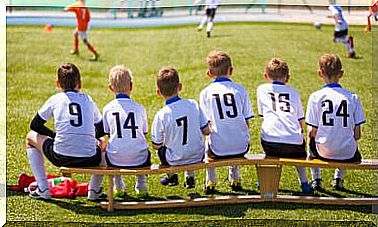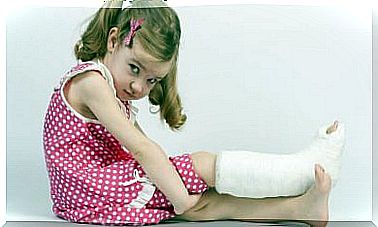4 Techniques For Dealing With Criticism In Adolescence

Adolescence is a stage of life in which one is more vulnerable and sensitive to any criticism. It is at this time when, among peers, criticism arises and, many times, adolescents are faced with situations in which they respond inadequately. Therefore, we are going to see techniques to face criticism in adolescence.
These techniques can also be used in adulthood, but during adolescence, as it is a more sensitive period, it is important that children learn to defend themselves against criticism in an assertive and appropriate way, always preserving their assertive rights.
How do we usually deal with criticism and what types of criticism are there?
Normally, when we receive a criticism, we react immediately and impulsively, so we tend to answer in a bad way and with bad ways. However, when faced with criticism, we can react in three ways.

Fighting back with another criticism
As a result of this way of acting is that, although we express what we feel, it usually damages relationships and ends up losing respect between both parties. For example: “¡Anda que tú !; But if you are the one who… , or Look who’s talking… ”.
Head-on denying criticism
This way of responding leaves the problem unsolved. For example: “ But what do you say ?; What are you doing, man? , or That is not true … “.
Avoiding criticism, refusing to argue
The result is the same as the previous one. For example: “Come on, okay, that’s it; Let’s quit, okay? , or I’m not going to tolerate this, I’m leaving ”.
It is also important that we take into account the difference between constructive and destructive technique. The first indicates the faults that we have, providing suggestions or advice to improve. The destructive, on the other hand, attacks the person directly to harm him and does not include any advice.
Techniques for dealing with criticism in adolescence
After this introduction, below, we are going to talk about some techniques to cope with criticism that can be used during adolescence.
Fog bank
This technique must be used especially when criticized with malicious intent; it is good to learn to use it to receive, in a natural way, any criticism without feeling ashamed. It consists of recognizing, in a calm way, that there may be some part of truth in the criticism that we are receiving.
For example:
- “It seems that today you have a bad face . ” Answer: “Yes, I might be pouting today.”
- “What an ugly shirt you’re wearing . ” Answer: “It may be, but I love it.”
Negative assertion, one of the techniques to face criticism in adolescence
If when we listen to criticism we realize that it is constructive and we agree, we will use it without bad attitudes, without justifying ourselves and without getting angry.
For example:
- “You have been 15 minutes late . ” Answer: “It is true, I have been very late.”
Assertive irony
In this case, we respond positively to destructive criticism.
Pot example:
- “What ugly glasses you wear!” . Answer: “Thank you …”.
Assertive questioning to face criticism in adolescence
This technique consists of asking for clarification. Thus, we will obtain information about whether the criticism can be useful to us or we can discard it, if it is with a manipulative intention. We will do this by asking our interlocutor to explain what specific aspect of our behavior he refers to.
For example:
- “What a pint you have today . ” Answer: “Yes? What is it about my clothing that catches your attention? ”.
Steps to follow to face a criticism

Thinking assertively (appropriately)
In this way, we free ourselves from the need for approval from others and accept that we have been wrong.
Ask for details of the review
By asking for details of the criticism, we can find out how others see us and if there is an attempt to harm or manipulate us.
Agree if we agree somewhere
We may agree in part with the criticism. We will acknowledge our mistake and thank our interlocutor for his criticism. In this way, we disarm the adversary.
Explain our position
In this case, we will calmly explain how we see it and, if we agree, we will accept it, acknowledge the error and apologize. If we are not, we should also do it saying that, perhaps, the person we are talking to is correct, but that we see it differently.
In short, these techniques to face criticism in adolescence can also be included by parents in our repertoire of social skills, thus, we also teach by example.
It is important that adolescents know how to defend themselves from criticism in an appropriate way, without being aggressive with words and even less with actions. Therefore, these techniques can help all boys to defend themselves in a correct way, without hurting the other person.










